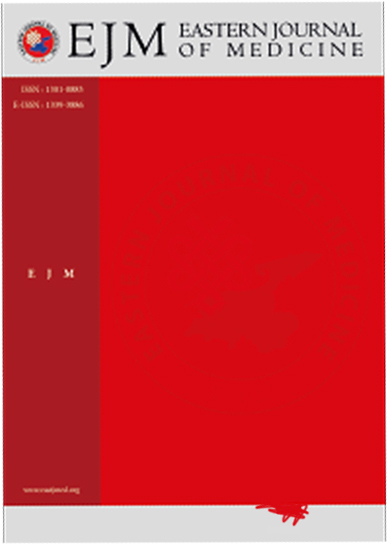The types of urodynamic detrusor overactivity and its relationship with neurological diseases. 10-years follow-up of 1000 invasive urodynamic studies
Alkan Çubuk1, Ahmet ŞAHAN1, Orkunt Özkaptan1, Berkan Simsek1, Muhammed Sulukaya2, Fatih Tarhan11Kartal Dr. Lütfi Kırdar Training and Research Hospital İstanbul, Turkey2Malatya Training and Research Hospital, Turkey
INTRODUCTION: The aim of this study is to compare detrusor overactivity (DO) subtypes namely terminal (TDO) and phasic (PDO) in terms of frequency, etiological reasons, urodynamic findings and relationships with neurological diseases.
METHODS: Patients characteristics including age, gender, neurological diseases, were noted. Bladder volume on the first desire to voiding (FSD), the strong desire to voiding (SDV), maximum bladder capacity (MBC), bladder compliance (BC), presence and type of DO, and amplitude of DO (Ad) were also noted during the IUDS. Patients with TDO and PDO were compared in terms of patient characteristics, urodynamic parameters, and neurological diseases.
RESULTS: 1018 patients were enrolled in the study. Neurological disease was noted in 180 patients; spinal cord trauma (SCT): 46, Alzheimer Disease (AD): 8, Parkinsons Disease (PD): 12, spina bifida (SB): 21, epilepsy (ED): 18, cerebrovascular disease (CVD): 20 and Multiple Sclerosis (MS): 55. Urodynamic DO was observed in 882 patients (neurogenic-DO: 149 and idiopathic-DO: 733), (PDO: 837, TDO: 45). A significant difference was observed between the groups regarding the FSD, MBC and Ad (p=0.032, p=0.049 and p=0.001 respectively). However, no difference was observed in BC (p=0.510). The incidence of TDO and PDO was 6% and 5% for neurogenic-DO and 94% and 95% for the idiopathic-DO, respectively (p=0.327). Among the neurogenic diseases only patients with SCT had significant differences regarding type of DO (TDO 11.1%, PDO 3.1%) (p= 0.04).
DISCUSSION AND CONCLUSION: Neurogenic diseases are not a significant risk factor for TDO. Spinal cord trauma İs associated with higher rates of TDO compare to other neurogenic diseases.
Keywords: Detrusor overactivity, urodynamic, urinary bladder, neurogenic, terminology
Manuscript Language: English














